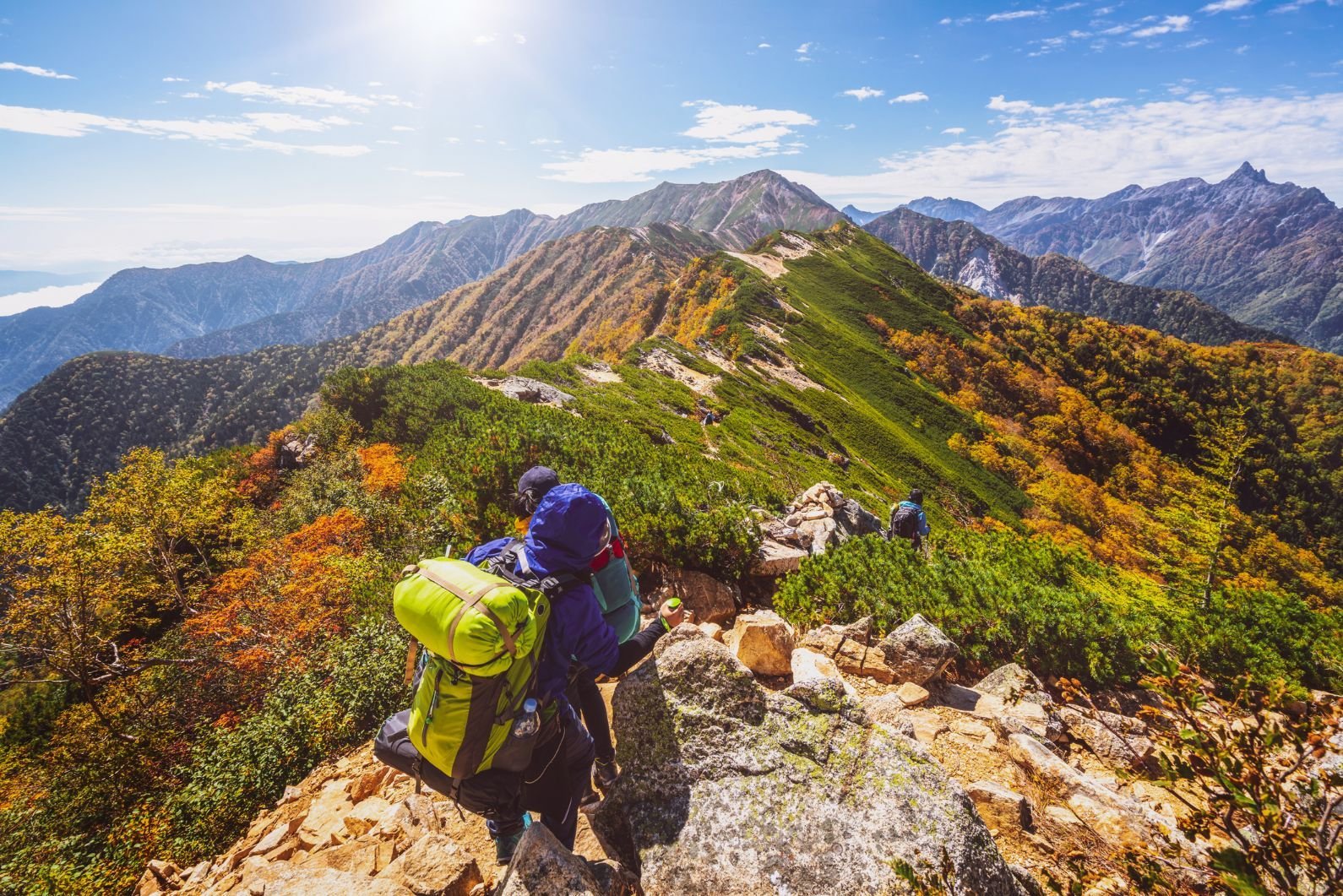The best hikes in Japan are the routes that immerse you in the remarkable forests, mountains and rivers of the country while also showcasing its unique culture - from the distinctive architecture to the spirituality and folklore which drives it.
Many of the best hikes in Japan are actually old pilgrimage routes, taking walkers from shrine to shrine, through majestic woodlands. Others head to high-rising ridges, where the pointed peaks of mountain ranges pierce the skies. Hiking in Japan allows you to explore one of the most unique and remarkable nations in the world. Here are the seven Japanese hiking routes we've chosen to get you started:
- The Koyasan Choishi Michi Trail
- The Kyoto Trail (Higashiyama Course)
- The Kamikochi-Yari-Hotaka Circuit (via Daikiretto Gap)
- The Nakahechi Route (on the Kumano Kodō Pilgrimage Trail)
- The Mount Fuji Pilgrimage Trail
- The Mount Takao River Valley from Takao
- Seven Waterfalls of Kawazu
- The Shikoku Henro Pilgrimage
- Hike Miyanoura on the Island of Yakushima
- Mount Kaikoma via the Kuroto Ridge
In the view of our in-house experts, these routes embody the spirit, history and wonder of Japan - from the Japanese Alps and Mount Fuji to the mystical forests.
It’s important to note that these route descriptions are only short summaries, designed to inspire but not to serve any navigational purpose. They are not intended to guide you on the route and further mapping and planning (or a local guide!) will be required if you want to safely walk any of the trails featured.
The Best Hiking Trails in Japan, Mapped
We've mapped the trailheads of our favourite Japan hikes, which take you from the mountains of the Kii Peninsula to the slopes of Mount Fuji.
1. The Koyasan Choishi Michi Trail, Koyasan
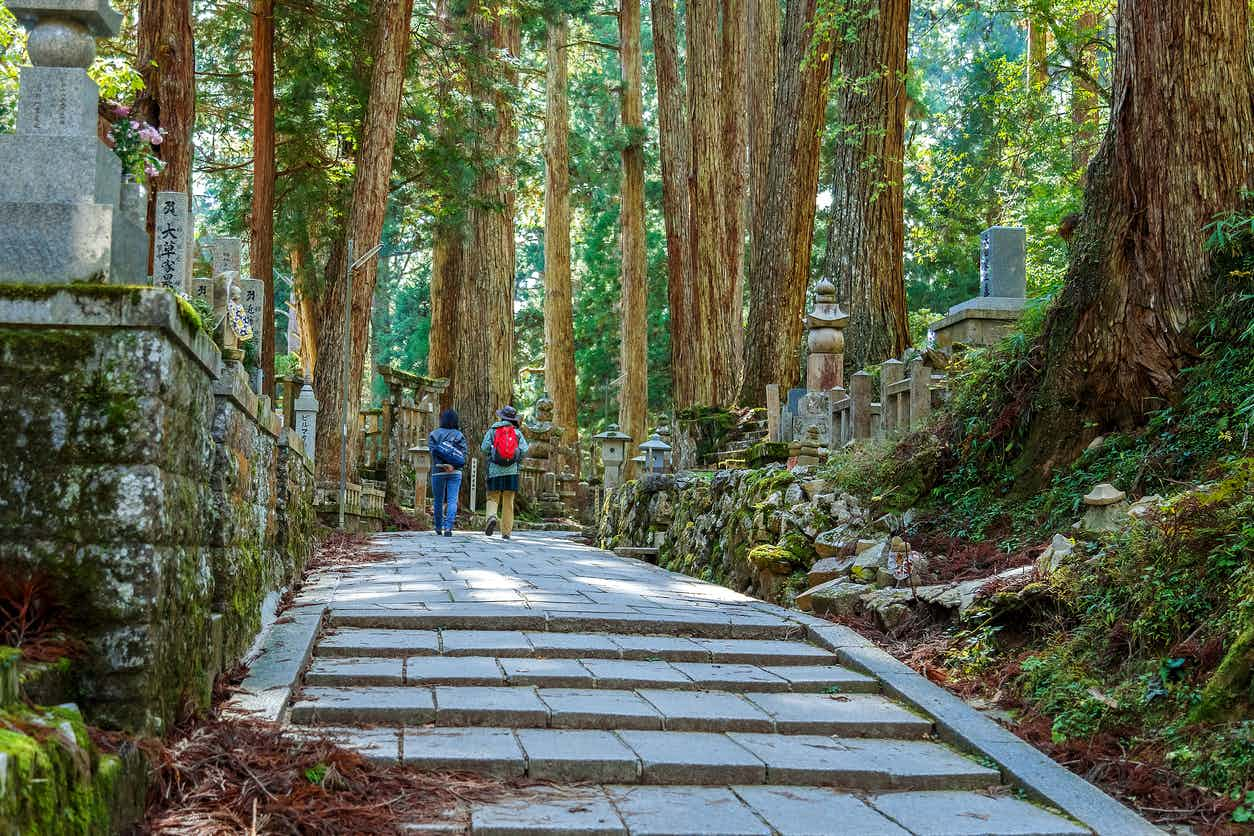
- Start/Finish: Kudoyama Station/ Daimon Gate
- Distance: 14.6 miles (23.5km)
- Walking time: 6-7 hours
- Difficulty: Moderate
- Best for: Shingon Buddhist temples and mountain forests
Koyasan is a monastic complex and important centre for Shingon Buddhism, located on a series of mountains carpeted in cedar forest, including Mount Kōya (1,009m/ 3,310ft). A network of ancient pilgrimage trails run through the woodlands and up the mountains, connecting the sacred shrines.
One of the most popular Koyasan Pilgrimage Trails is the Choishi Michi Trail, named after the stone signposts (choishi) which mark the path so that pilgrims can find their way. From the station you’ll walk to Jison-in Temple, which women visit to pray for pregnancy and safe childbirth, before following the trail uphill to Ropponsuggi Cedar Pass, a path lined with majestic cedar trees. It winds through sun-dappled forest, past the tranquil Kodago Pond and past three sacred stones said to have been placed by Kobo-Daishi, the founder of Koyasan. The hike ends at the Daimon Gate, the 25m-high gateway to Koyasan, which has panoramic views of the surrounding mountains.
The hike takes between six and seven hours, but this doesn’t account for the time taken to look around the temples. It’s worth noting that several small sections of trail have been closed due to damage caused by heavy rain - detours are clearly demarcated, and make it possible to complete the hike.
2. The Kyoto Trail (Higashiyama Course), Kyoto
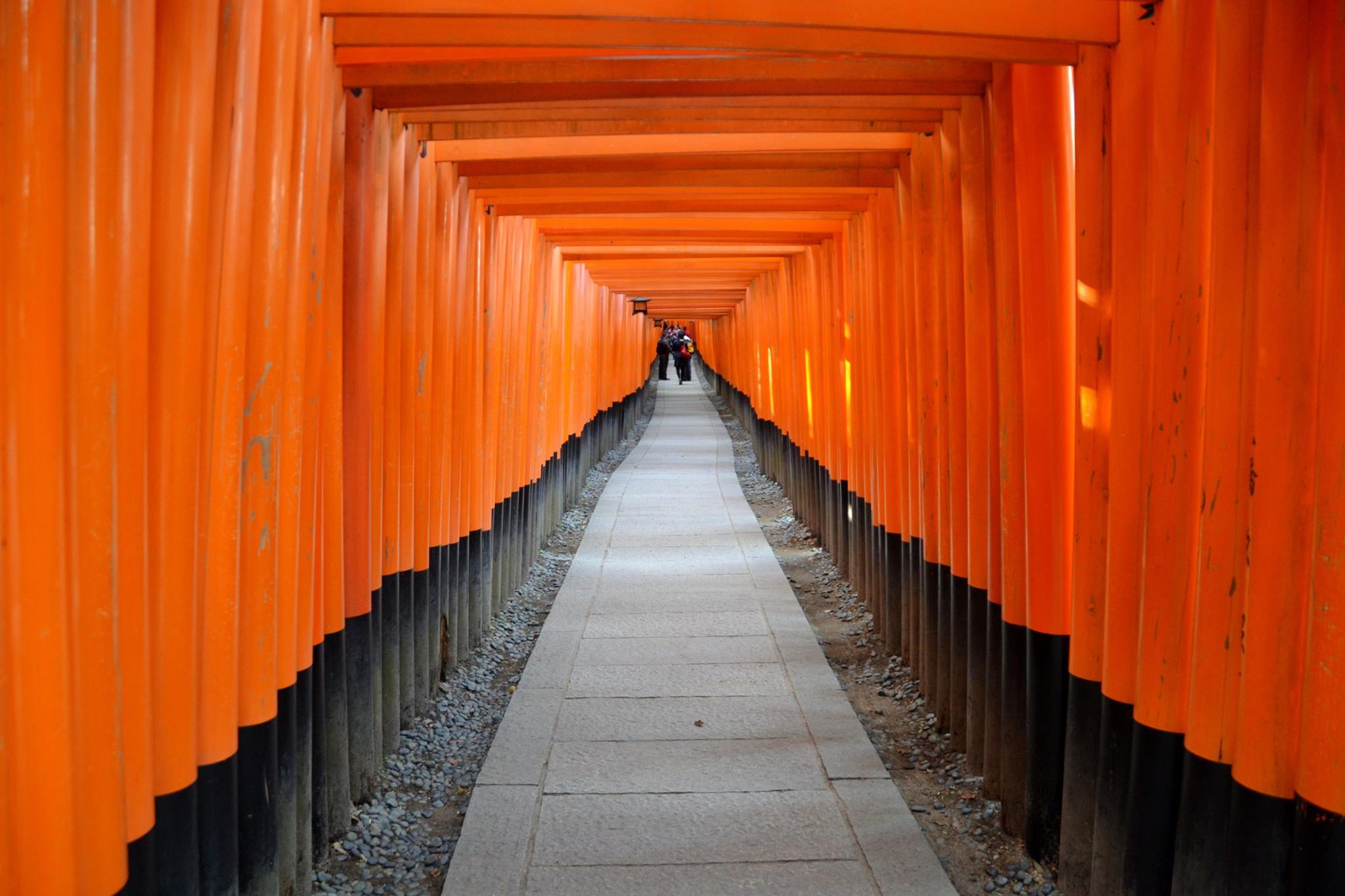
- Start/Finish: Fushimi Inari Station/ to Hiei Cable Car Station
- Distance: 15.2 miles (24.6km)
- Walking time: 5-6 hours
- Difficulty: Moderate
- Best for: Exploring the temples and attractions of Kyoto
The Kyoto Trail is a network of hiking routes in and around the city of Kyoto, taking in its temples and shrines, as well as the surrounding hills and cedar forests. The Higashiyama Course - signposted with numbers - takes you through the heart of the Higashiyama District (Kyoto’s old town), beginning with a short walk from the station to the iconic Fushimi Inari Shrine, famous for its numerous orange gates. From here, you’ll need to climb 400 stone steps to Yotsu-tsuji, a scenic lookout point over the city.
After this, the trail takes you past several important temples, including the Uta no Nakayama Seikan-ji Temple, known for its cherry blossoms in spring and red acer leaves in autumn. You’ll climb to the triangulation point of Mount Kiyomizu-yam (242m/ 793ft), before ascending a steeper, rockier path and then climbing along a ridgeway to Mount Daimonji-yama (456m/1,496ft), where you’ll have views of the forested Yamashina Basin to the south, and Kyoto to the west. Descending down moss-carpeted stone steps, you’ll walk the Philosophers’ Path, a stone path alongside a canal lined with cherry trees.
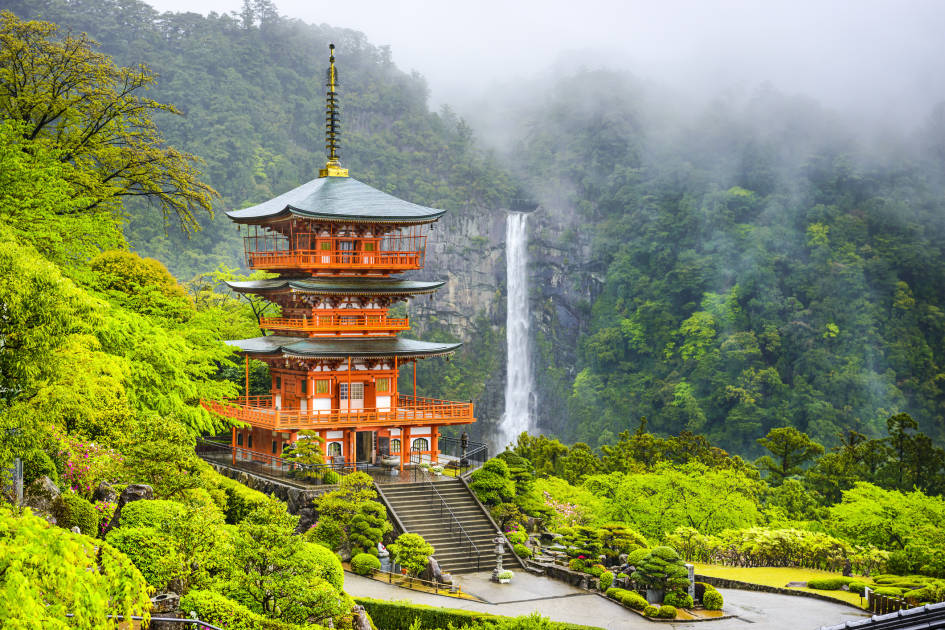
The final part of the hike is an ascent to the top of Mount Hiei (848m/2,782ft), with panoramic views over the city and surrounding hills. At the top you’ll find a cable car station, which you can use for the descent to the city, and a garden museum with a sculpture garden.
The hike in its entirety takes around five to six hours - however, this doesn’t account for time spent looking around the numerous temples and shrines you pass. We’d recommend taking your time to enjoy the sights and stopping to sample some of Kyoto’s delicious street food, such as mochi (stuffed bean cakes), meat skewers or ameyu, a fermented ginger health drink.
3. Mount Yari and Mount Okuhotaka (via the Daikiretto Gap), Japanese Alps
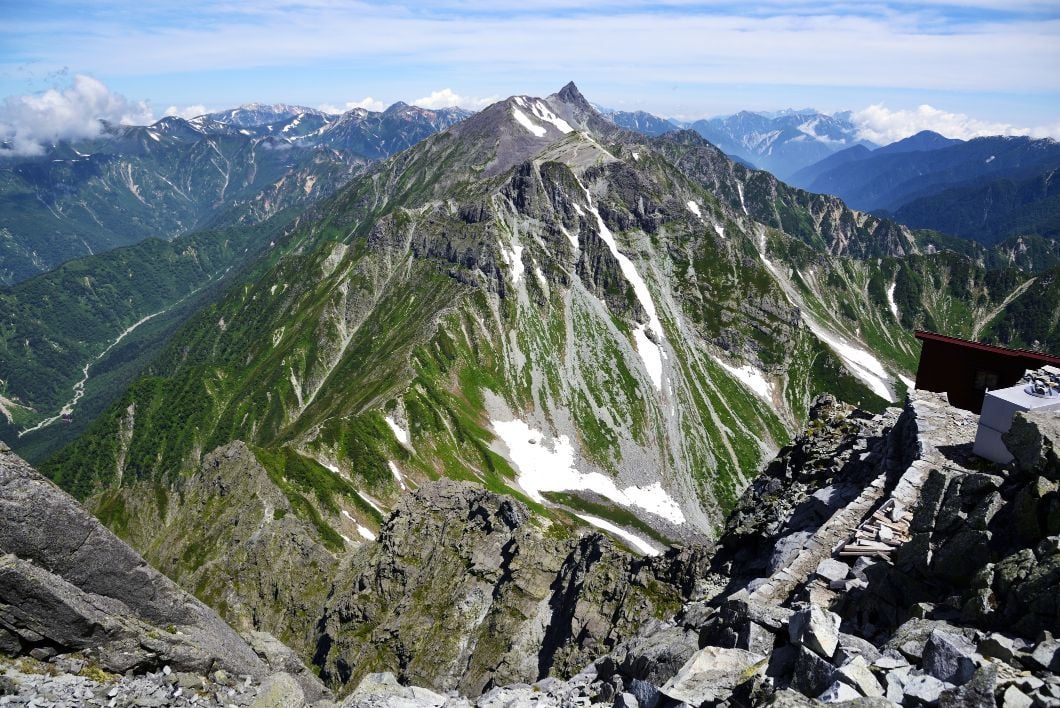
- Start/Finish: Kamikochi
- Distance: 21 miles (33km)
- Walking time: 3 days
- Difficulty: Challenging
- Best for: Japan's best hut to hut hiking
The Japanese Alps is a term used to refer to the Hida Mountains, Kiso Mountains and Akaishi Mountains that stretch across Japan, bisecting the island of Honshu, which is the largest and most populous island of the country (with Tokyo on the east coast and Mount Fuji in the south). The name was popularised by Reverend Walter Weston, an English missionary known as the "Father of the Japanese Alps," for whom there's a plaque in Kamikōchi, where this route starts.
The hiking in the Alps is plentiful, but this trek on the high peaks - commonly known as the Kamikochi-Yari-Hotaka Circuit - is one of the best mountain hikes in Japan.
We should note that this isn’t a single day out, but rather a multi-day adventure. Leaving Kamikochi, your first day on this classic will see you ascend Mt. Yarigatake, which stands 3,180m (10,433ft) tall, in a distinctive spear shape which gives it its name (‘Yari’ translating as ‘spear’). The route up passes through lush forests and rivers until you reach the truly rugged peak, looking over the 15 mountains that make up the Japanese Alps.
You'll spend night one in a mountain lodge here - where you'll sleep on tatami mats and eat simple, delicious Japanese food like ramen. Day two will then see you take on the Hotaka ridgeline and the legendary Daikiretto Gap, a traverse with steep drops which guides you to Okuhotaka. It's not to be taken lightly, but the gap has unrivalled views of the distinctive Alp mountains.
After another night in a lodge, an early rise the next morning will take you to the summit of Mt Okuhotaka, the third highest mountain in Japan, with some iron ladders for assistance, then it's back to Kamikōchi.
This is a truly adventurous, mountainous hiking route - and we firmly believe, one of the best hikes in Japan.
4. Kumano Kodō Pilgrimage Trail (Nakahechi Route), Kii Peninsula
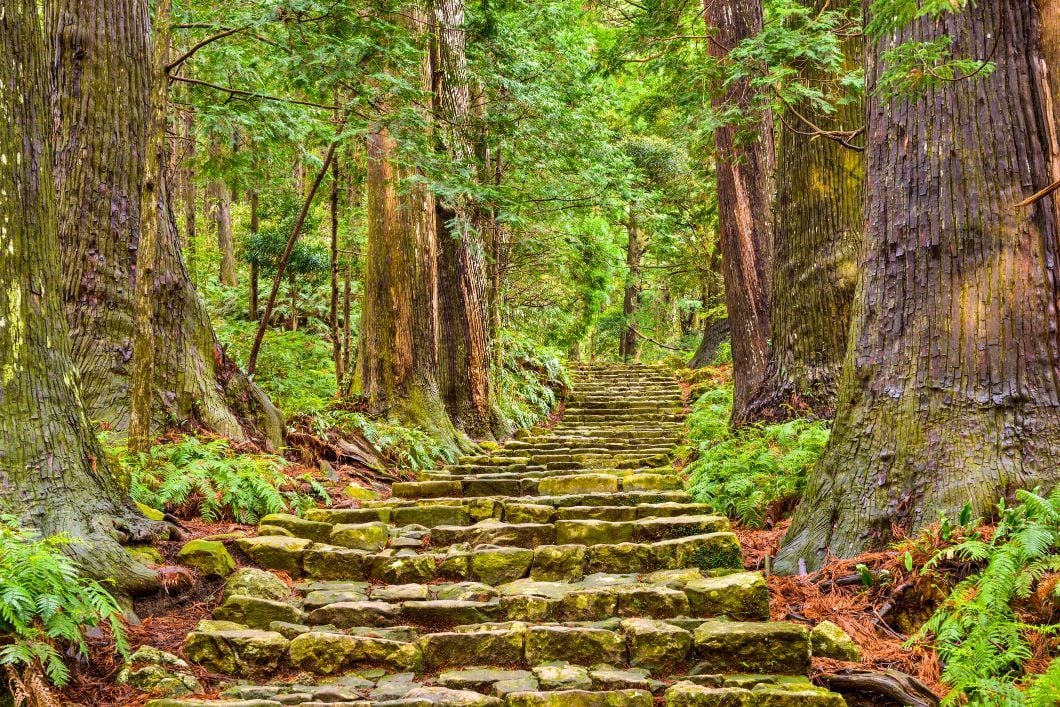
- Start/Finish: Takijiri-oji/Nachi Taisha
- Distance: 41 miles (66.5km)
- Duration: 4-5 days
- Difficulty: Challenging
- Best for: tracing the footsteps of Samurai.

Japan is a country rich in tradition, history and natural beauty and the Kumano Kodō hiking trails capture all of that. The trail was routinely walked by emperors and samurai who considered it sacred and left behind detailed diaries of their voyages here from Kyoto. Thanks to this, and the stunning nature, the pilgrimage route became one of only two to have UNESCO World Heritage status in 2004, the other being the legendary Santiago de Compostela route finishing in Spain.
The Kumano Kodō is not one trail but a network of routes - the most popular of which is the Nakahechi Route, which passes the three grand Shintō shrines of Kumano that would traditionally be visited by pilgrims. Tanabe, on the Kii Peninsula is the starting point for the Nakahechi route, the gateway to Kumano. From there it's ancient pine groves, small villages, forest trails, stunning viewpoints, a stop at Japan’s tallest waterfall and some stunning Japanese architecture. The trail is just under 70km and usually walked in four to five days.
5. The Gotemba Trail, Mount Fuji
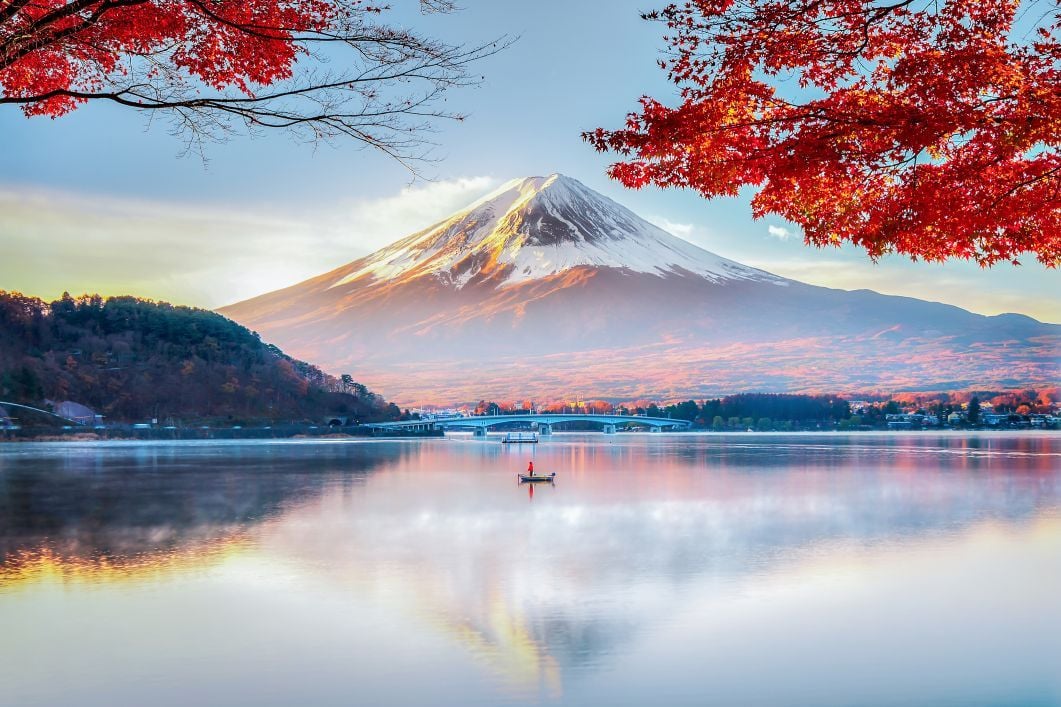
- Start/Finish: Gotemba Trail Shin-5th Station
- Distance: 13.1 miles (20km)
- Duration: 9-15 hours (1-2 days)
- Difficulty: Challenging
- Best for: summit baggers.
Mount Fuji is world famous. The highest mountain in Japan, standing at a lofty 3,776m (12,388ft), the dormant volcano is named for the Buddhist fire goddess Fuchi, and there's a shrine to the Shinto goddess Sengen-Sama found at the summit. The pilgrimage trail up Fuji passes through sacred forests, home to Shinto shrines and Buddhist temples. If you've only got a short time to go hiking in Japan, it's a real classic.
The Yoshia Trail is the most popular route up Mount Fuji, but the Gotemba Trail, which is a lot quieter, is our pick for this list. It's the longest, starting at 1,440m (4,724ft), but because of this, it has by far the fewest other climbers on it (and it has similar views). The slopes on the way up are also gentle, making for a lengthy, but manageable hike. The climb up is around nine hours of hiking, but on the way down, you can run down sandy sections, and be down in a few hours.
The climbing season for Fuji is in July or August, when most of the snow has melted, but you can still take on part of the Fuji hike year-round. There are ten stations along the way on the Fuji climb, the first station being at the bottom of the mountain, and the 10th on top. Many people venture to one of the four 'fifth stations', and the trek to this point really is a beautiful hike in itself. From here, if the sky stays clear, you can look down on the five lakes of Fuji; Lake Kawaguchiko, Lake Yamanakako, Lake Saiko, Lake Motosuko and Lake Shojiko.

6. Takao to Hozukyo, near Kyoto
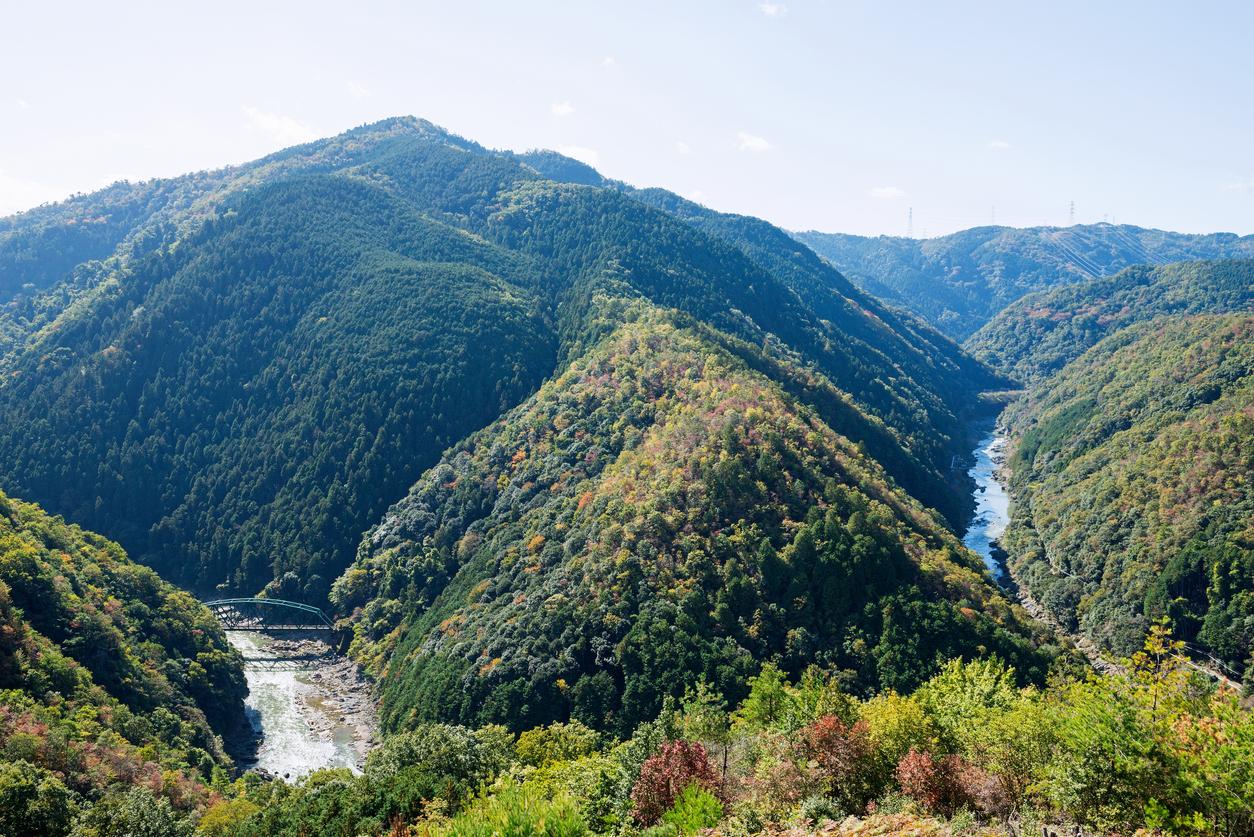
- Start/Finish: Takao/Hozukyo
- Distance: 6.2 miles (10km)
- Duration: 5-6 hours
- Difficulty: Moderate
- Best for: a big day out near Kyoto.
If you're looking for hikes near Kyoto, this hike is an excellent choice, combining the serene atmosphere of the Mount Takao River Valley with a couple of temple visits. You'll start in the hamlet of Takao, which can be reached by bus from Kyoto (go to the JR3 bus boarding point and take a bus going to Toganoo or Shuzan). Takao is surrounded with maple trees, with fresh green foliage in spring and blazing red leaves during autumn.
Cross a red bridge to visit Saimyo-ji Temple, followed by a climb up some stone steps to Jingo-ji Temple, the second temple on this route. At Jingo-ji you can buy kawarake - clay discs designed to ward off evil - which you can throw off the nearby cliff into the river valley below. Once you've visited the temples, go back down the stairs towards the river, following it along the east bank as it heads downstream. You'll pass gorgeous emerald pools, and will have glimpses of the surrounding mountains through gaps in the foliage.

After a few kilometres, the trail crosses the river and heads long the west bank. When you reach the village of Kiyotaki, make sure you take a detour to Kiyotaki Waterfalls - along an atmospheric trail that snakes along the creek into a narrow ravine. After that, it's on to your finish point at Hozukyo, where you can catch a 20 minute train back to Kyoto.
7. The Seven Waterfalls of Kawazu, Amagi Highlands
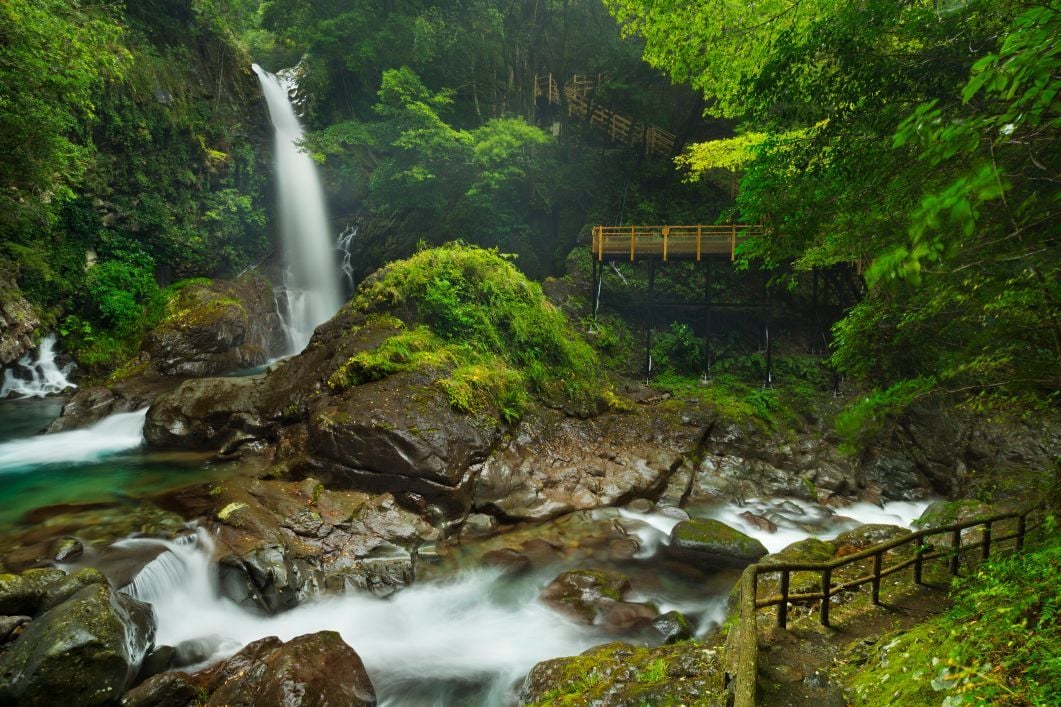
- Start/Finish: Kawazu Station
- Distance: 3 miles (5km)
- Duration: 1-2 hours
- Difficulty: Easy
- Best for: An immersive, relaxing adventure
For a lot of people, hiking in Japan is all about enchanting forests, mesmeric rivers, ancient folklore and beautiful waterfalls. If that’s what you’re after then this seven waterfall hike in Kawazu is one of the best hikes in Japan for you.
Deep in the Amagi Highlands, this route follows an age-old track winding through native beech forest and farmland until you arrive at the waterfall trail. The seven range in height from the Odaru, falling a full 30m to the Kanidaru, falling just two. There are wild swimming spots and hot springs en route, and in terms of culture, the trail is connected by setting to the work of Nobel-prize winning author Kawabata Yasunari, who immortalised the area in his story “The Izu Dancer”.
You'll find statues depicting the heroine of this short story dotted along the charming walk. This is a relatively easy one or two hour hike, but one which really captures the beauty and culture of Japan.
8. The Shikoku Henro Pilgrimage, Shikoku Island
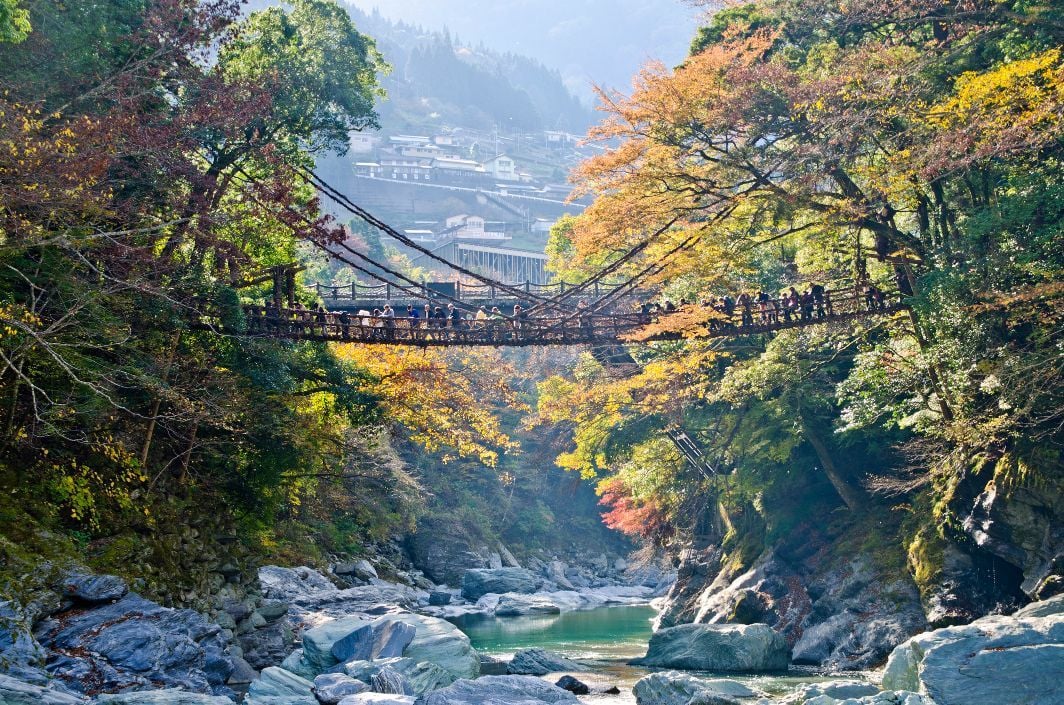
- Start/Finish: Ryōzenji temple/Ōkuboji temple
- Distance: 700 miles (1,150km)
- Duration: 6 weeks
- Difficulty: Challenging
- Best for: Seeing Shikoku, and tracing Japan through temples
If our last two entries have been a bit short for you, then perhaps the Shikoku Henro Pilgrimage trail is more your type of thing - one of the world’s few circular pilgrimages, the route spans 750 miles (1,150km) and takes in over 80 temples along the way, as well as numerous other sacred sites where Ku-kai (or ‘Kōbō Daishi’, founder of the esoteric Shingon school of Buddhism and one of the most important figures in the religion) is believed to have trained.
Over the course of that mileage you get to see the best of Shikoku, the smallest of Japan’s major islands, from the forests and rivers to the culture, and get a sense for the spirituality that drives the island. There are plenty of hiking opportunities.
When walked in full from Temple 1, Ryōzenji in Tokushima, the Shikoku Henro Pilgrimage can take up to six weeks to complete. It’s a mission in slow travel, self-discovery and remarkable nature. With the most common route following the order of the temples, it’s also easy to plan a part-route trek, for example walking from temples 13-17 or temples 71-77, to create a less time-intensive hiking route.
9. Mt. Miyanoura, Yakushima Island
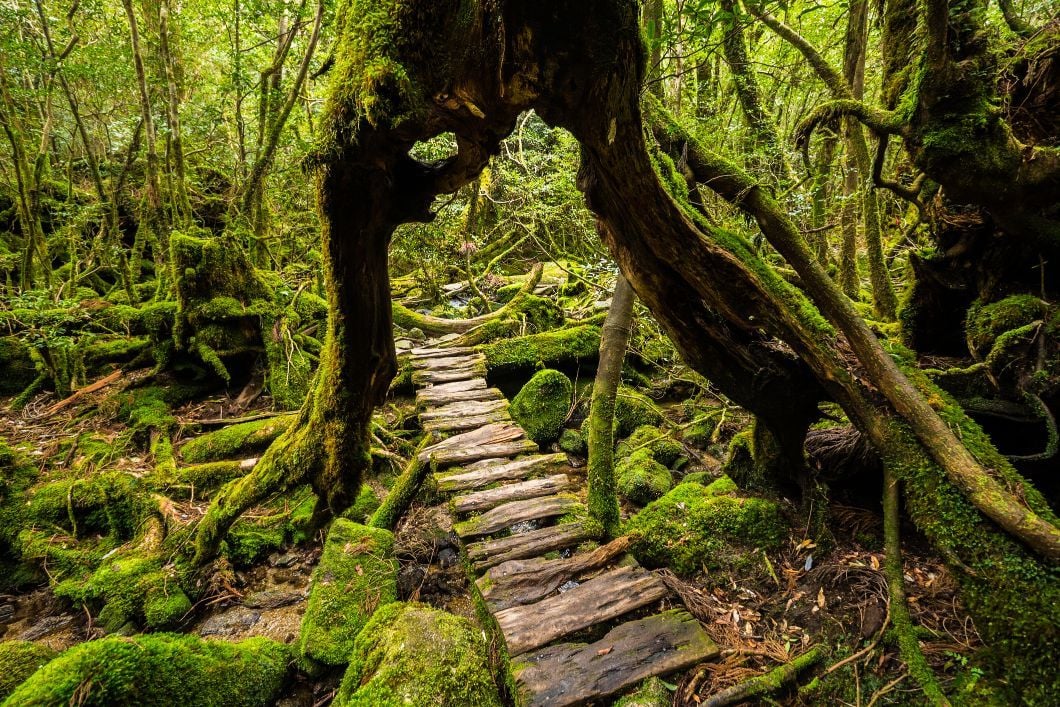
- Start/Finish: Yodogawa trailhead/Arakawa trailhead
- Distance: 10 miles (16km) on summit day (plus arrival and departure days)
- Duration: 1-2 days
- Difficulty: Challenging
- Best for: An off-the-beaten track forest and mountain adventure.
Yakushima is an island in the Kagoshima Prefecture renowned for its cedar forests, home to some of the oldest trees in Japan, and for its array of wildlife, which ranges from red-bottomed macaques and sika deer to Japanese raccoon dogs and Japanese weasels.
Descending, you'll pass Jomon Sugi, the largest and oldest cedar tree in the forest, dated between 2,170 and 7,200 years old.
The forests are now a national park and were declared a Natural World Heritage Site way back in 1993. Locals joke that it rains “35 days a month” here, but as you can imagine all that forest, rain and the flora and fauna that come with it make for some mesmerising and particularly unique views.
At 1936m (6,351ft), the hike up Miyanoura is nowhere near the Japanese Alps or heights of Fuji, but it's one of the best hikes in Japan thanks to those beautiful forests and because it's just so distinctive.
Starting with an intense vertical, the route leads through an array of forests, and eventually up to the 360 degree panorama at the top. You'll pass Jomon Sugi, the largest and oldest cedar tree in the forest, dated between 2,170 and 7,200 years old (quite a range!). If you love forests and want to get way off the beaten track, this is the Japanese hiking route for you.
The route can be walked in one day, but it is intensely demanding, and the public transport options are limited. There are also huts in the area. Do your research and planning before you head out.
10. Mount Kaikoma via the Kuroto Ridge, The Southern Alps
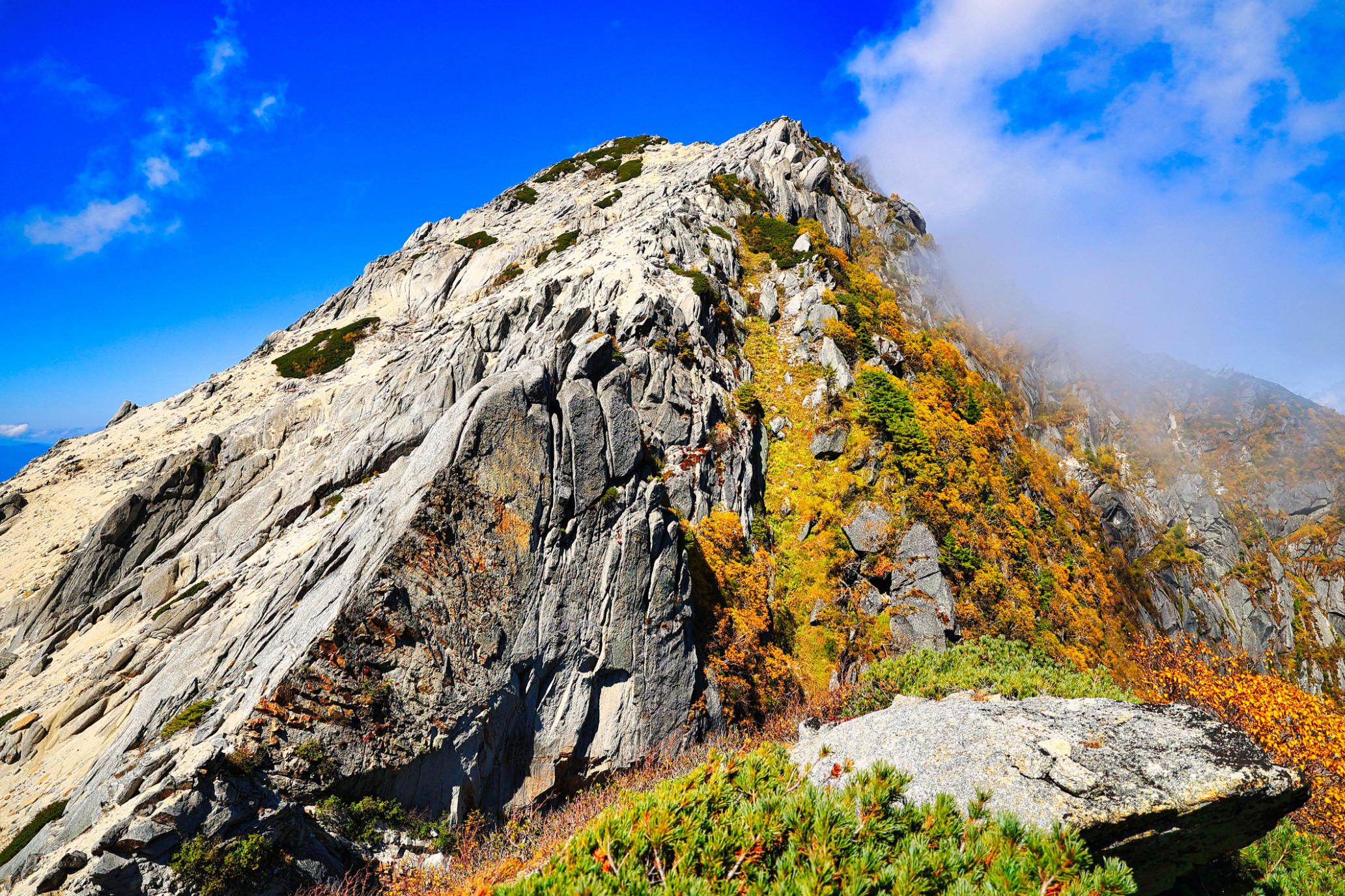
- Start/Finish: Ojiragawa Canyon/ Kitazawa Pass
- Distance: 8.3 miles (13.5km)
- Walking time: Overnight
- Difficulty: Challenging
- Best for: Japan’s steepest ridge hike
Mount Kaikoma is an impressive 2,967m-high (9,734ft) granite peak in the Japanese Alps, and reaching the summit will take you up one of Japan’s steepest hiking trails. You’ll begin by hiking uphill through a forest before emerging onto the Kuroto Ridge. It’s a steep rocky ridgeline with views of the mountains and forest on either side - and 20 ladders to climb to the summit. You’ll have navigated two of them before you reach Shichijo Hut, where you can camp overnight.
From Shichijo Hut, it’s a few hours of hiking to reach Mount Kaikoma, a fun and challenging route up a steep path with ladders, chains and some scrambling involved. From the top, there’s panoramic views of the Southern Alps. Descend via a different route, which takes you up a sub-peak called Mount Marishiten, and then a steep downhill route towards the forested Kitazawa Pass, the end of the route.
When is the Best Time to Hike in Japan?
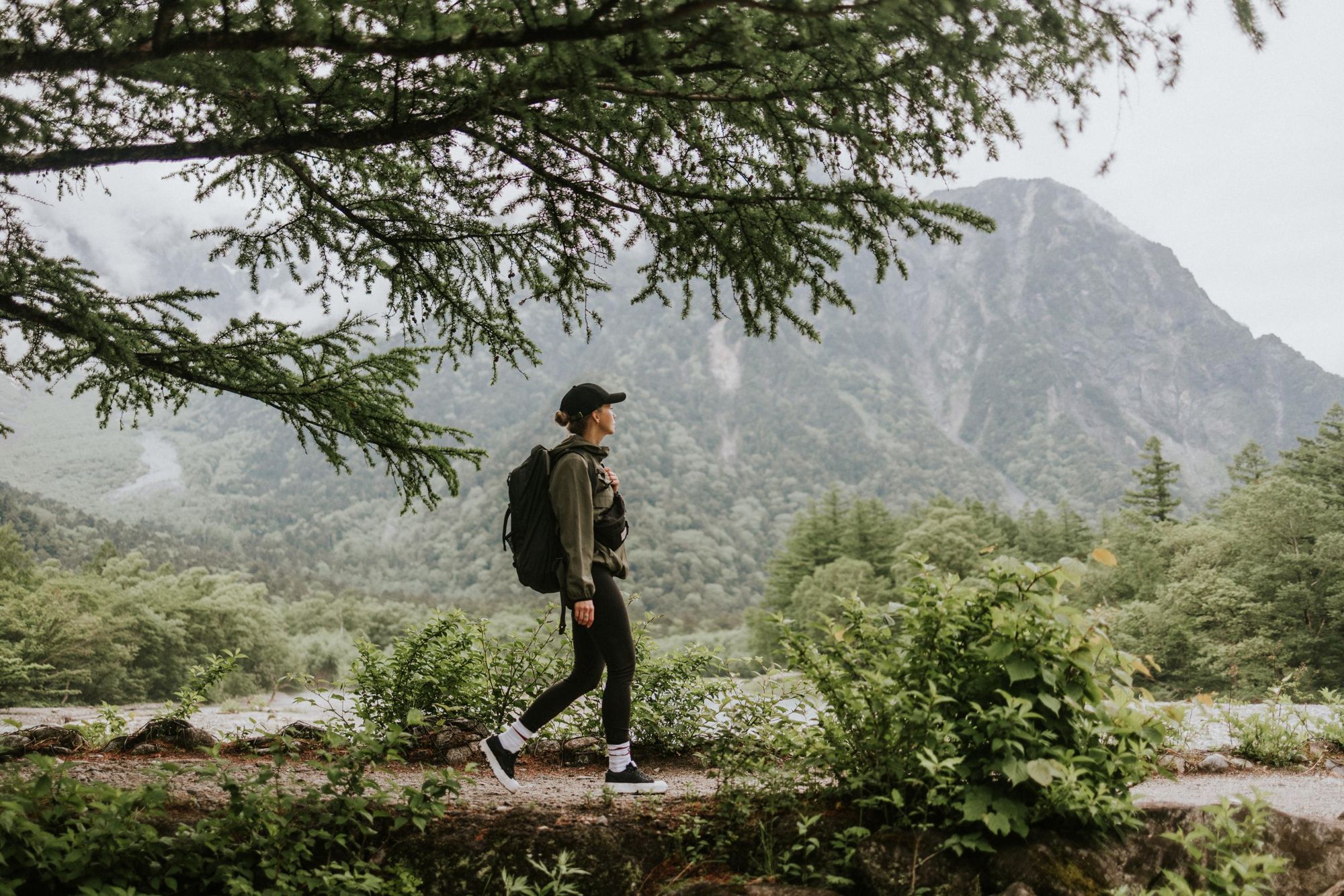
Lower altitude trails in Japan can be hiked year round, but hiking season tends to be considered October until May. This avoids the rainy season which falls somewhere between May and July in most regions, and the heat of summer.
One of the most popular times for hiking include late October to mid-November, when autumn foliage in Japan's ancient forests is a glorious blaze of colour. During these months, the temperature is in the early 20°Cs . Another is during the cherry blossom season, which takes place from the end of March until early May - the spring foliage is also vibrant during this period. During these months, the weather is cool, but rises rapidly - from about 8°C in March to 20°C by May. These are also the busiest times of year.
In higher altitude mountain ranges, such as the Japanese Alps, the hiking season is between late April to early November (and shorter at higher altitudes, as snow will block some trails in November). Not only is the weather best for hiking during this season, this is also when the mountain huts are open.
What Animals Live in Japan?

There are over 50,000 species of animal living in Japan’s mountains, tropical islands and atmospheric forests, 279 of which are endemic. These include the Japanese serow, a furry ‘goat antelope’ dwelling in dense forest, the Japanese racoon dog (as cute as it sounds) and silver-furred Japanese macaques - all of which can be found in the Japanese Alps.
Asiatic black bears are distributed across the two main Japanese islands - Honshu and Shikoku - including the mountains around Kyoto. The Kii Peninsula, which is crisscrossed by the Kumano Kodō pilgrim routes, is home to sika deer, the endemic Japanese weasel and Asiatic black bears.
Where to Stay in Japan?
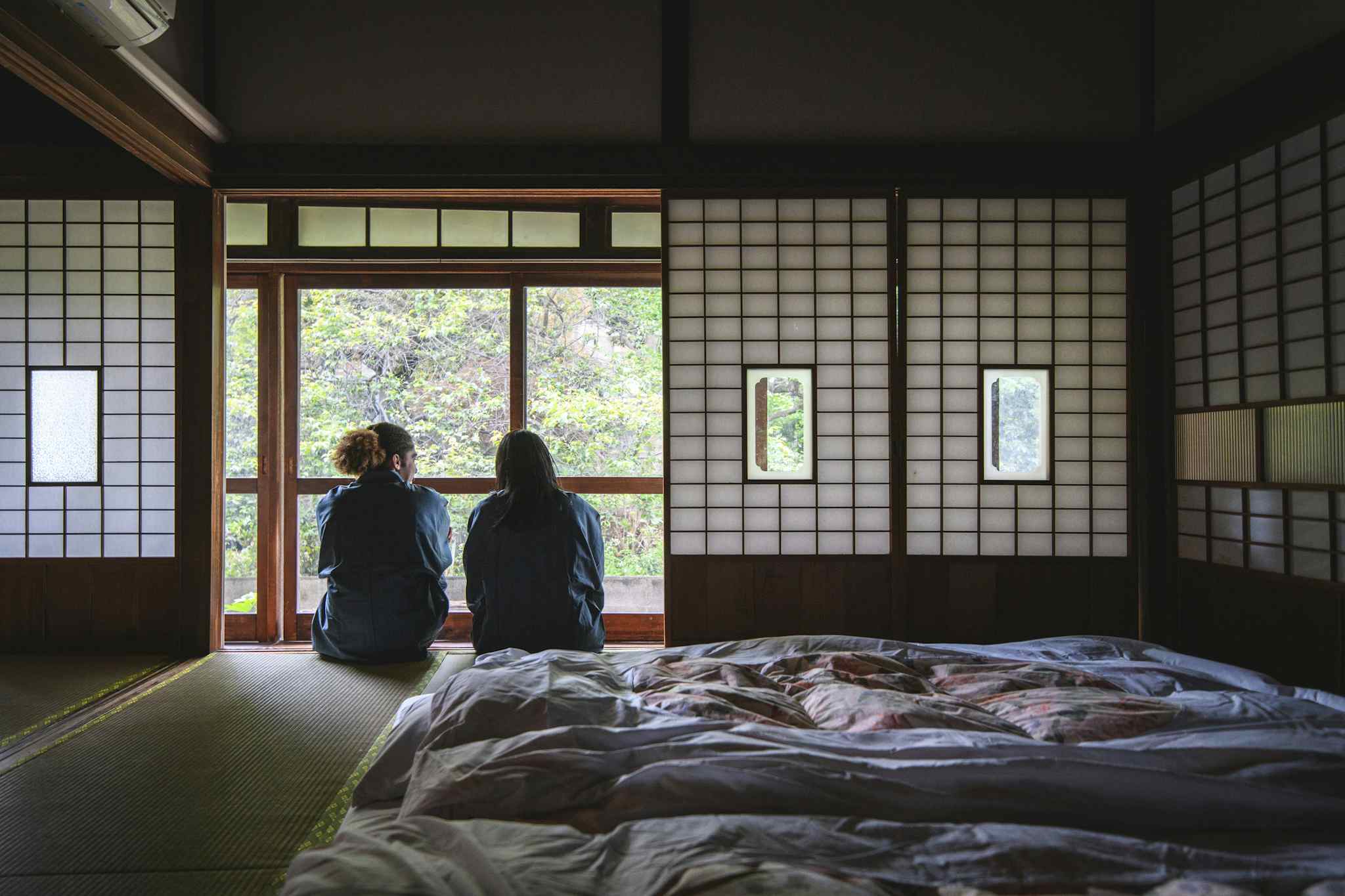
Most people fly into Tokyo, where it’s worth spending a couple of days exploring the neon lit streets. A good base for hiking is Kyoto, where there’s a variety of different accommodation options, from upmarket hotels to ryokans. These are traditional inns which offer futons on the floor, communal bathing facilities instead of private bathrooms and multi-course dinners called kaiseki. You can also stay in ryokans whilst hiking the Kumano Kodō.
If you’re interested in hiking around Koyasan, we recommend staying in the temple lodging accommodation. The lodges are similar to ryokans, with futons on tatami matting, but you’ll eat the same vegetarian cuisine as the monks and can also join them for morning prayers.
In the Japanese Alps you’ll find mountain huts where you’ll be sleeping in dormitory accommodation and sharing communal bathrooms. Despite its rustic nature, you’ll receive the famed Japanese hospitality, known as omotenashi, and will enjoy simple dishes such as udon or katsu curry.
What to Eat in Japan?
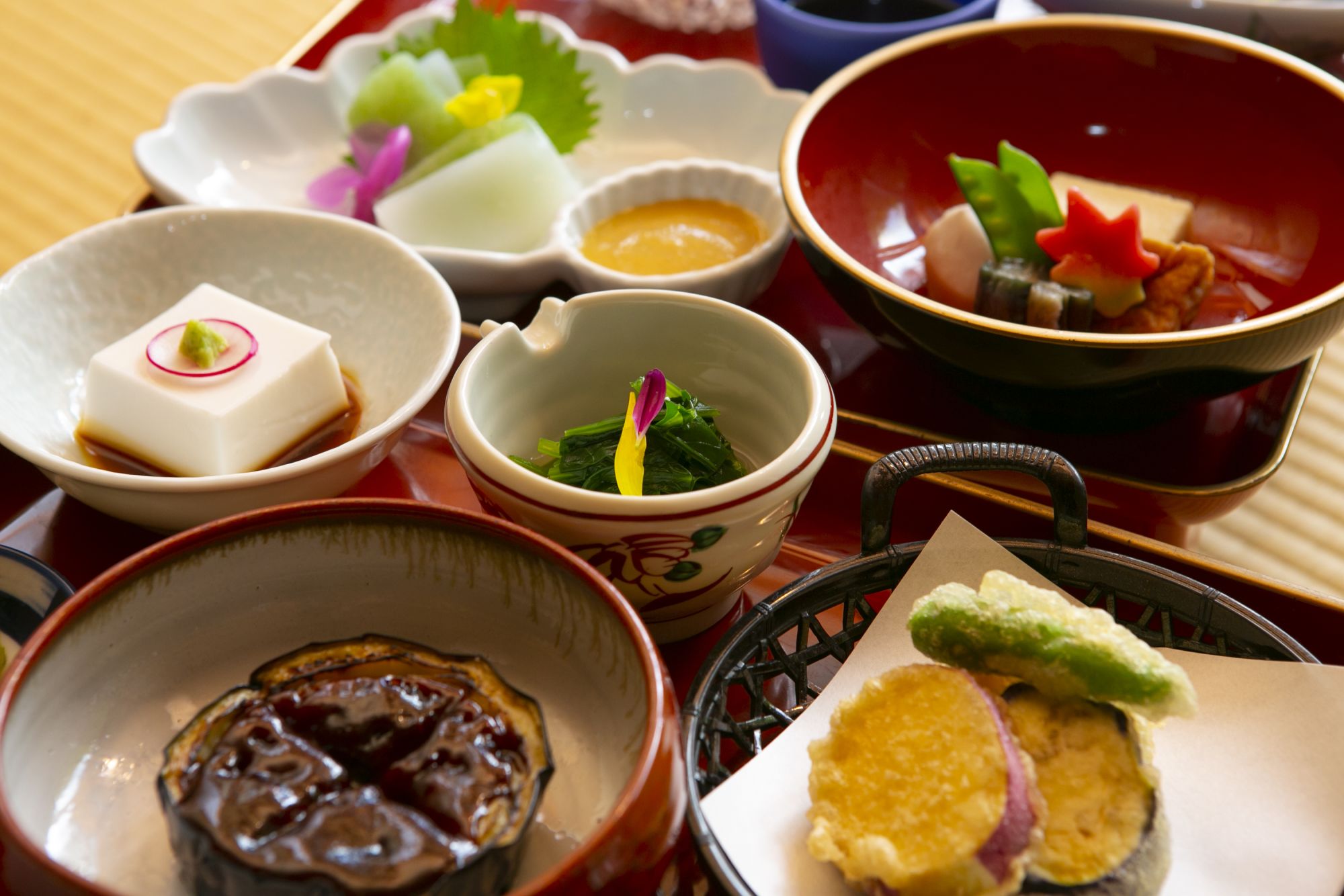
When you think of Japanese food, chances are you’ll think of crispy tempura, rich bowls of pork ramen, and sushi made with the freshest fish. All of these foods are popular in Japan, and we definitely recommend you try them. But it’s also worth delving a little deeper into the country’s traditional cuisine. There are plenty of street foods you can try in Japan, from takoyaki (pancake balls with seafood inside), senbei - rice crackers flavoured with soy sauce or nori - and korokke, which is the Japanese version of croquettes.
Japanese food, known as ‘washoku’ is based around five principles, including five cooking methods - raw, simmered, steamed, grilled, and fried - and five flavours, all of which should be perfectly balanced. These are salty, bitter, sweet, sour and ‘umami’ (which means ‘savoury’). One of the best ways to experience these principles of Japanese cuisine is during a traditional kaiseki meal - nine courses beginning with an appetiser such as soup, seasonal sashimi, and progressing to a flame-grilled main course or a substantial hotpot.
If you stay at a temple you can try ‘shojin ryori’, a simple vegetarian Buddhism cuisine made without garlic or onions (strong tastes said to over-excite the senses). Dishes include sesame tofu, natto (fermented soybeans) and kenchinjiru, clear broth made with root vegetables and dashi.
How to Get to (and Around) Japan?
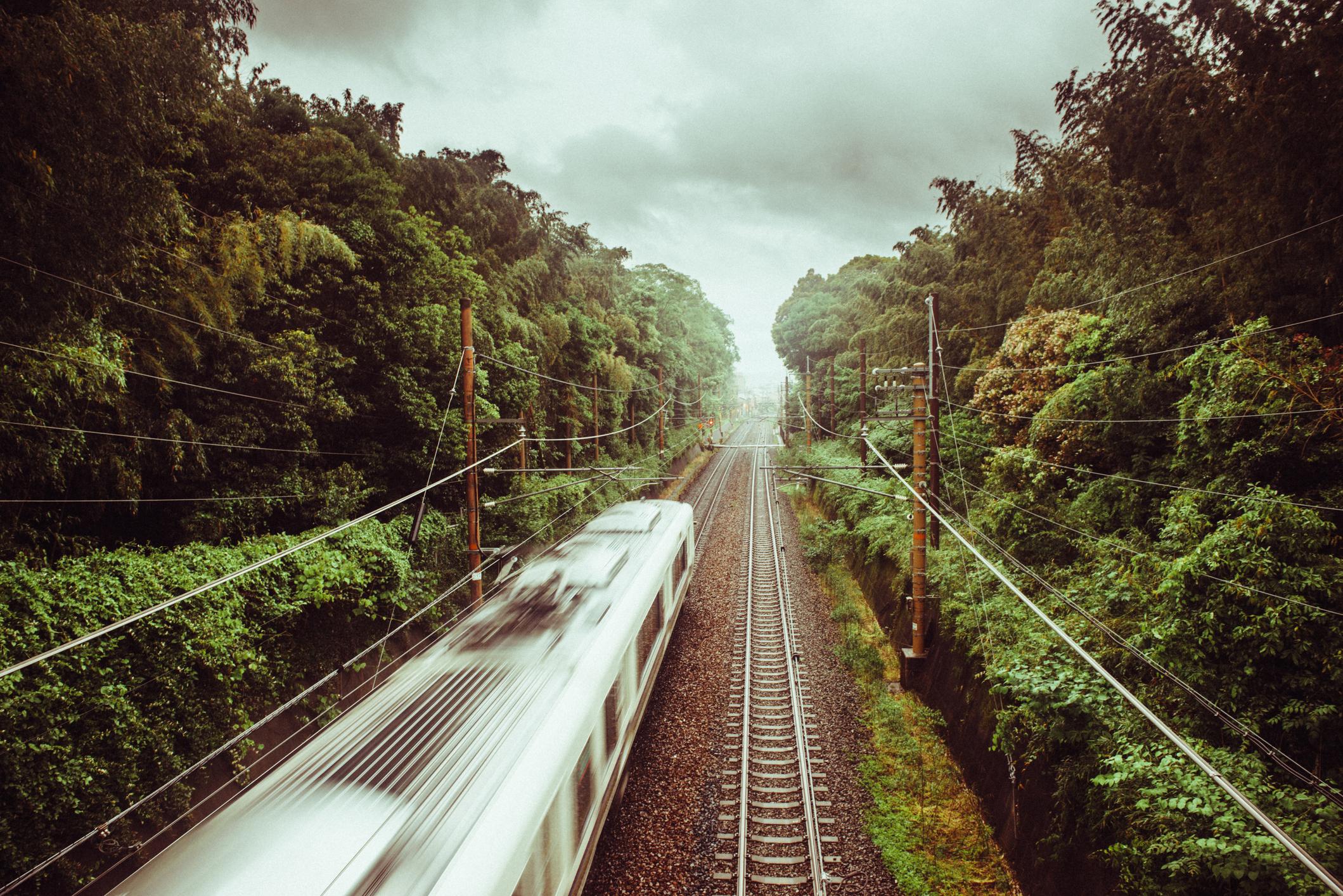
By train: Japan has an extensive and efficient train network, stopping at most major cities and towns. There are five main types of train in Japan: Local; Rapid; Express; Limited Express / Special Express ; and Shinkansen (Bullet Train). The local train will stop at each station, and therefore take much longer - you use it for short distances, while rapid and express also make frequent stops. Rapid express trains only stop at major destinations, but they don’t match the speed of the bullet train, which can travel up to 198.8 mph (320kmh) and are the most popular choice for crossing the country.
By plane: Japan has four international airports: Narita and Haneda (both near Tokyo); Kansai (near Osaka) and Chubu (near Nagoya). There are also numerous regional airports - around 90 in total, making air travel easy and convenient.
By bus: Japan also has a good network of both local and overnight buses, which are more economical than its trains for travelling round the country. Buses are useful for getting to remote spots, such as hiking trailheads.
Read More:
- How Japanese ‘Omotenashi’ Manifests itself in the Mountains
- The Japanese art of Daisugi Tree-Growing
- 20 of the Best Hikes in Asia
Inspired? Check out our Ultimate Adventure in Japan, taking you along some of Japan's best hiking trails.

